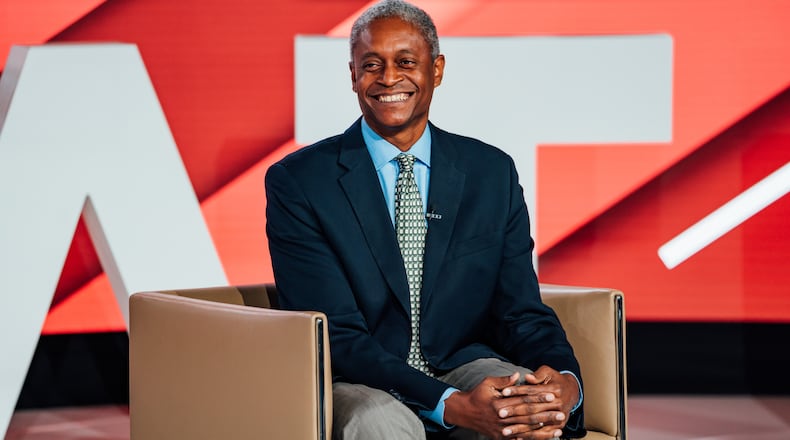Keeping interest rates high for too long could damage the economy, but the chance of another inflation spike is enough to delay lowering those rates, according to the president of Atlanta Federal Reserve Bank.
The pace of inflation has dropped dramatically, falling from nearly double-digits increases as the Fed cranked up its benchmark rate 11 times in 2022 and 2023, but it is still slightly above the Fed’s target of 2% growth per year, said Raphael Bostic in an online message posted Monday.
“Because uncertainty is rampant in the domestic and global economies, it is premature to claim victory in the fight against inflation,” he wrote. “While headline inflation is moving in the right direction, a closer analysis reveals that it’s not time to give the all-clear signal.”
Bostic typically posts a message on the Atlanta Fed’s web site each quarter.
As one of a dozen presidents of Fed regional banks, his public pronouncements are often tracked by investors and economists. That is especially true now, since he is currently a member of the Fed’s Open Market Committee, the elite group that controls the federal funds rate, which is used to set many other rates.
When that benchmark rate rises, so do borrowing costs through the economy, which means pricier auto loans, mortgages and credit cards.
By making it more expensive for consumers and companies to borrow, the Fed hoped to chill growth by convincing some companies not to expand or hire and some households to delay or forego buying appliances and vehicles.
Historically, the Fed has been willing to chill the economy, triggering layoffs, delinquencies and foreclosures, in order to control inflation. To squelch the worst post-war inflation during the late 1970s, the Fed under Paul Volcker raised the benchmark rate to more than 20% in 1980.
The economy staggered and unemployment rose to 10.8% as millions lost jobs, but inflation plummeted, the Fed lowered rates and the economy rebounded.
This time, as they raised rates, Fed officials hoped out loud for a “soft landing” in which the economy slowed enough to tame inflation without slipping into a recession.
And inflation did drop.
But even as inflation seems headed for 2%, hiring and economic growth have stayed strong and unemployment rates have increased only marginally, Bostic said. “That’s unusual.”
In the past, aggressive rate hikes sparked an average rise of 1.5 percentage points in unemployment. This time, the national job rate has ticked up from 3.6% to 3.7%.
Inflation “doves” have argued that the battle is won and the Fed needs to lower rates.
Bostic acknowledged their argument and said he worries about “a risk of keeping interest rates elevated for too long and inflicting unnecessary damage.” But lowering rates too soon also has its risks, he said.
Mainly, that cheaper borrowing costs would spark renewed spending, which would, in turn, kindle a new burst of inflation.
“Many executives tell us they are on pause, ready to deploy assets and ramp up hiring when the time is right,” Bostic wrote. “I asked one gathering of business leaders if they were ready to pounce at the first hint of an interest rate cut. The response was an overwhelming ‘yes.’”
He called that the threat of “pent-up exuberance.”
Rates should not be lowered yet, he said. “We seek a delicate balance: keep the economy thriving without allowing high inflation to persist.”
About the Author
Keep Reading
The Latest
Featured




